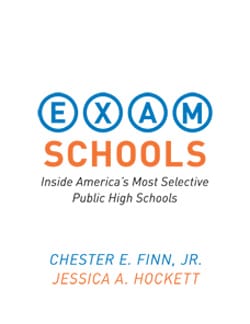 |
In a previous post, I lauded TBFI for digging into subjects that others have glossed over, typically due to a belief that we already have enough collective knowledge on the subject. Usually, the result is that Fordham reports unexpected findings that indicate how much more complicated and interesting the matter actually is.
But there’s another type of research TBFI pursues that I find even more valuable: the study of important stuff that most of us didn’t even know was out there.
For example, the Ohio team recently wrote about the challenges of student mobility; earlier, the national team looked at pension issues in charter schools, “private” public schools, and the red tape that affects school leaders. All of these are significant contributions to our understanding of under-examined corners of the K-12 world.
The recent product that best exemplifies this area of study is Finn and Hockett’s book on Exam Schools. I—like many of you, I suspect—knew that such schools existed. But I just never gave them much thought, and I certainly didn’t know how many there were, what they did, or what they meant for education reform more broadly.
But all that has changed, and I’m thankful for it. The authors not only give the informative descriptive statistics of this mini-sector of public education, they tease out invaluable lessons and implications.
I had no idea that there were so many of these schools or that they educated so many kids. I never realized that expanding this type of school would be an extremely wise national investment—a way to provide a world-class public education to high-performing students. I also didn’t know that many of these schools are serving large numbers of historically-disadvantaged students and getting great results.
I’m fascinated by how these schools fit in and don’t fit in to the larger systems of which they are technically a part. The way they enroll students—as well as how they are run, staffed, and governed—varies with each school, so there is no shared model, aside from the fact that they are quite different from the average neighborhood public school.
Many of us talk increasingly about “portfolio management,” a way to think about a city’s entire collection of schools and ways to ensure that new schools start, low-performing schools close, and so on.
I’m now convinced that we have to make sure exam schools are part of this conversation. While we strive to close the achievement gap, we have to make sure that we provide great options to high-performing kids, especially those in low-income neighborhoods who would otherwise have limited access to the opportunities these schools provide.
If you’re interested in urban education, portfolio management, or options for high-performing students, you really ought to give this book a read. It is a real eye-opener.